Link to Instructables:
https://www.instructables.com/id/The-Spring-Bag/




In this motion assignment, I used threads and embroidery frame to create the shape of the dream catcher. At the first, the circuit didn’t work because I used sandpaper to remove the paint, which was not helpful. But after I burned the conductive thread, it worked well.









Here are the fire extinguisher and the fire. I sewed the flexinol with the red felt to get the fire. And the fire extinguisher is a soft button that I can press it to connect the Arduino circuit. The inspiration came from the motion of the flexinol which reminds me of the sparkling flames. So I decided to use the fire extinguisher button to trigger the fire. The button can be pressed to put out a fire.
Here are two simple circuits I created to test the thermochromic ink. The patterns are not very obvious. I might need to press hard to make sure there is a contact between the circuit and the thermochromic ink.


As for the mini project, I drew some green leaves(white acrylic paint, blue and yellow ) on the oil painting canvas. So we I connect the Arduino to my laptop, the ink get heat and the leaves turn green into white. The idea of the project is to show the influence of global warming, environmental issues might cause species extinction, so we need to save energy to protect our environment.


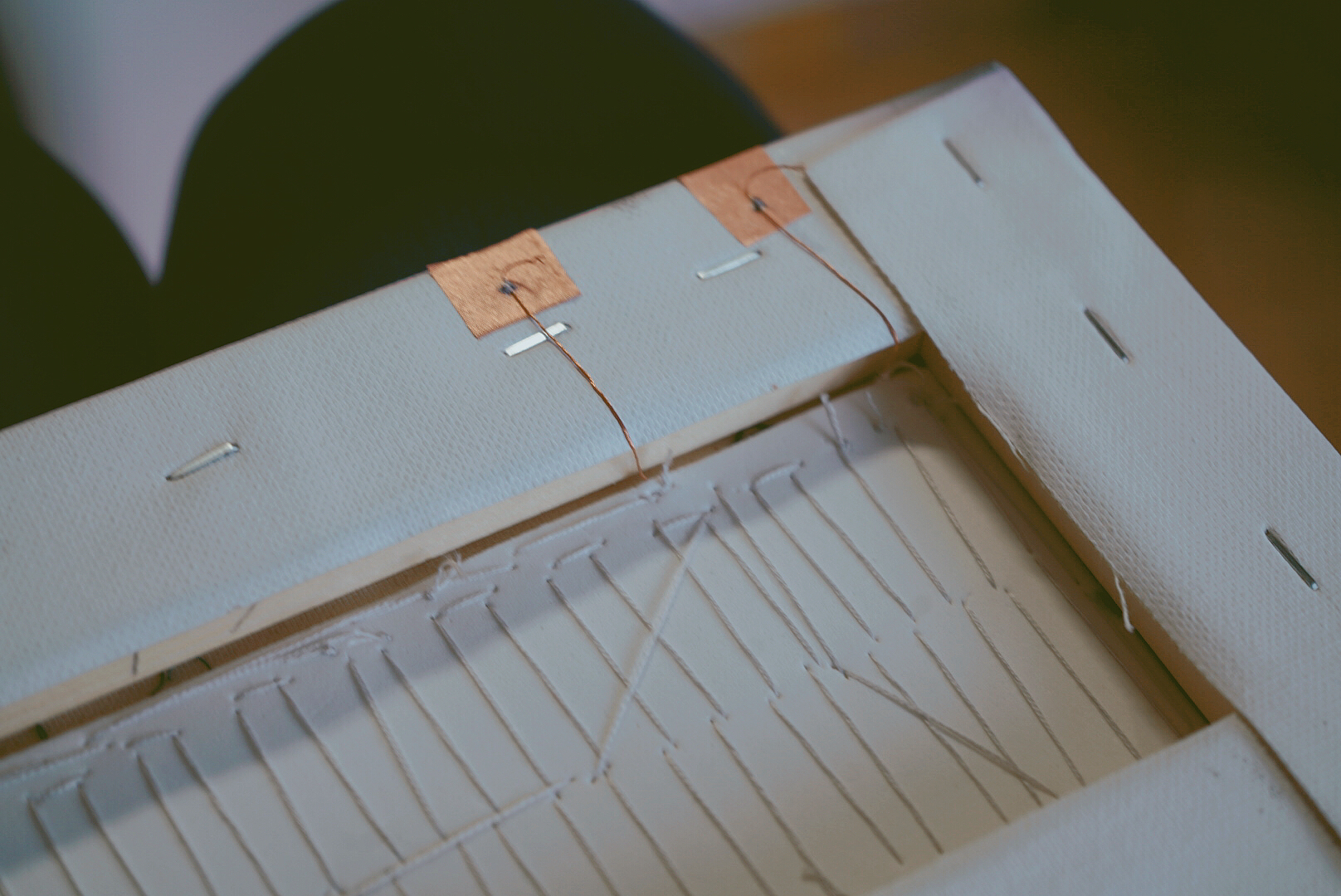



Here are my 3 speaker swatches:
The first one is made of conductive threads and embroidery cloth. I tried to use sewing thread to fix the conductive material on the cloth. And for the second one, I wanted to use conductive tapes and wood to create a pattern different from the spiral. As for the third one, it is similar to the woven speaker. I wrapped the yarn on the embroidery frame first and then embedded the conductive thread in it.

I used a knitting loom and the conductive yarn to make this soft sensor. The output of the sensor varies according to the shape of the knitting piece. If I fold the sensor, the output will decrease. So I wrote the code that if the output of the soft sensor reaches a certain number, the LED will be turned on.
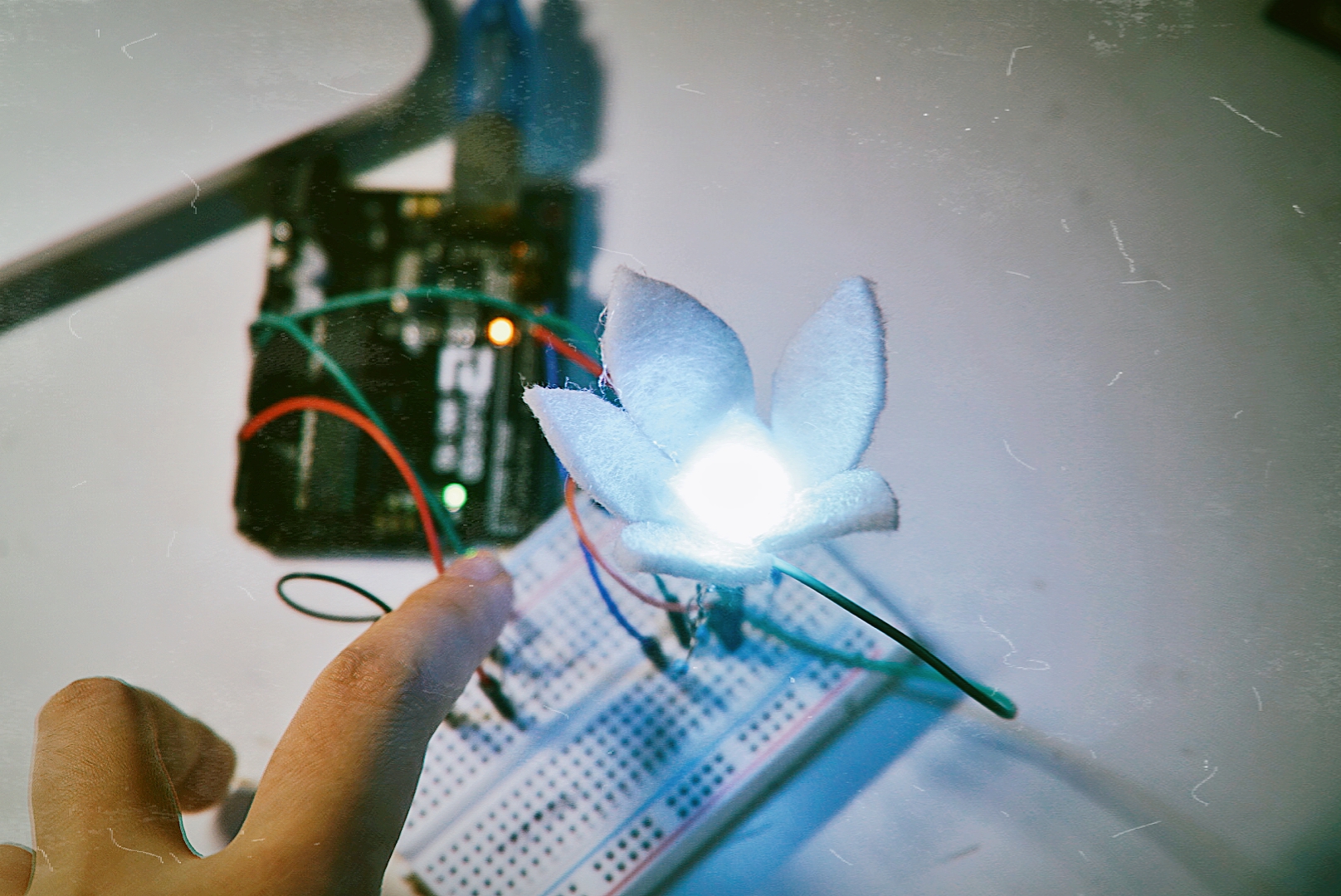
This is a fabric flower made by felt and an RGB LED. I used a photoresistance as the variable to change the color of the LED. Here is the screenshot of the code:
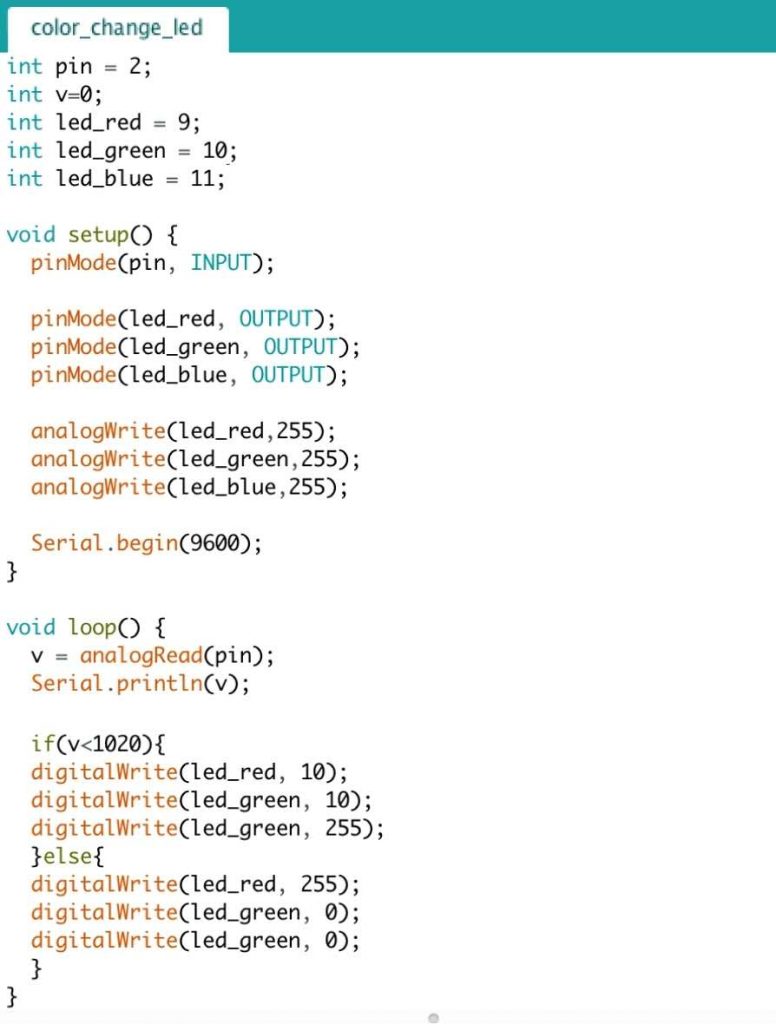
Midterm:
I am going to combine the midterm assignments from New Arcade and Computational Craft. This project will be game design garments that two players can wear and fight each other. The inspiration comes from a traditional Chinese game — Judose. It is a game played by standing on one leg and grasping the other, it is a physically competitive game with one simple rule, to knock your opponent over. The original version of the game is quite violent. What I am going to do is adding conductive fabric and LED instructions to the kneecap. Attacking your competitor on the particular area will cause your competitor to lose his points. The player who loses all the points first is the loser, and the other one is the winner.
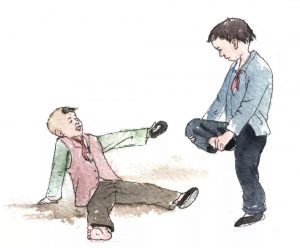
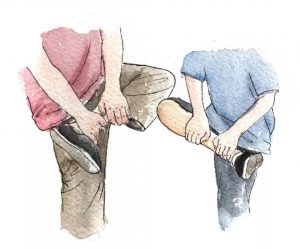
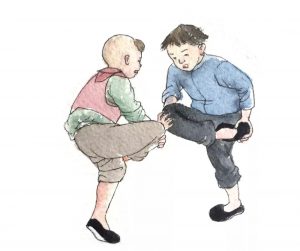
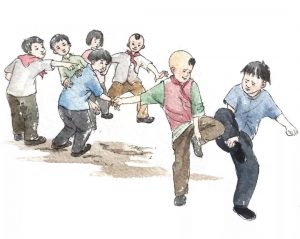
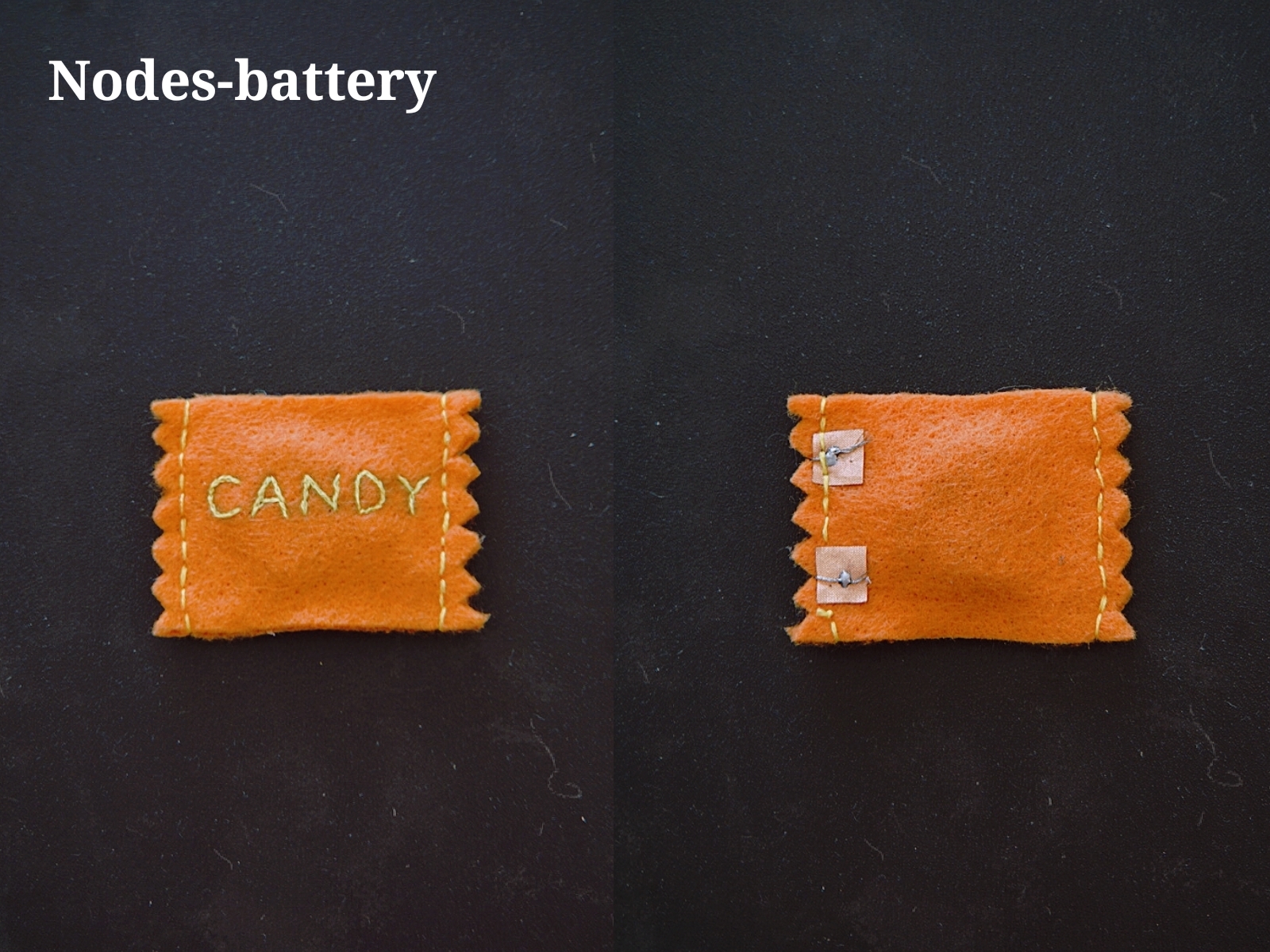 I used felt, conductive thread, and conductive fabric to make the battery node. The shape of this node originates from the candy wrappers.
I used felt, conductive thread, and conductive fabric to make the battery node. The shape of this node originates from the candy wrappers.
 The LED node is made by paper, foam plastic and conductive fabric. Use clips to attach to the foundation of the lamp a battery will turn on the light.
The LED node is made by paper, foam plastic and conductive fabric. Use clips to attach to the foundation of the lamp a battery will turn on the light.
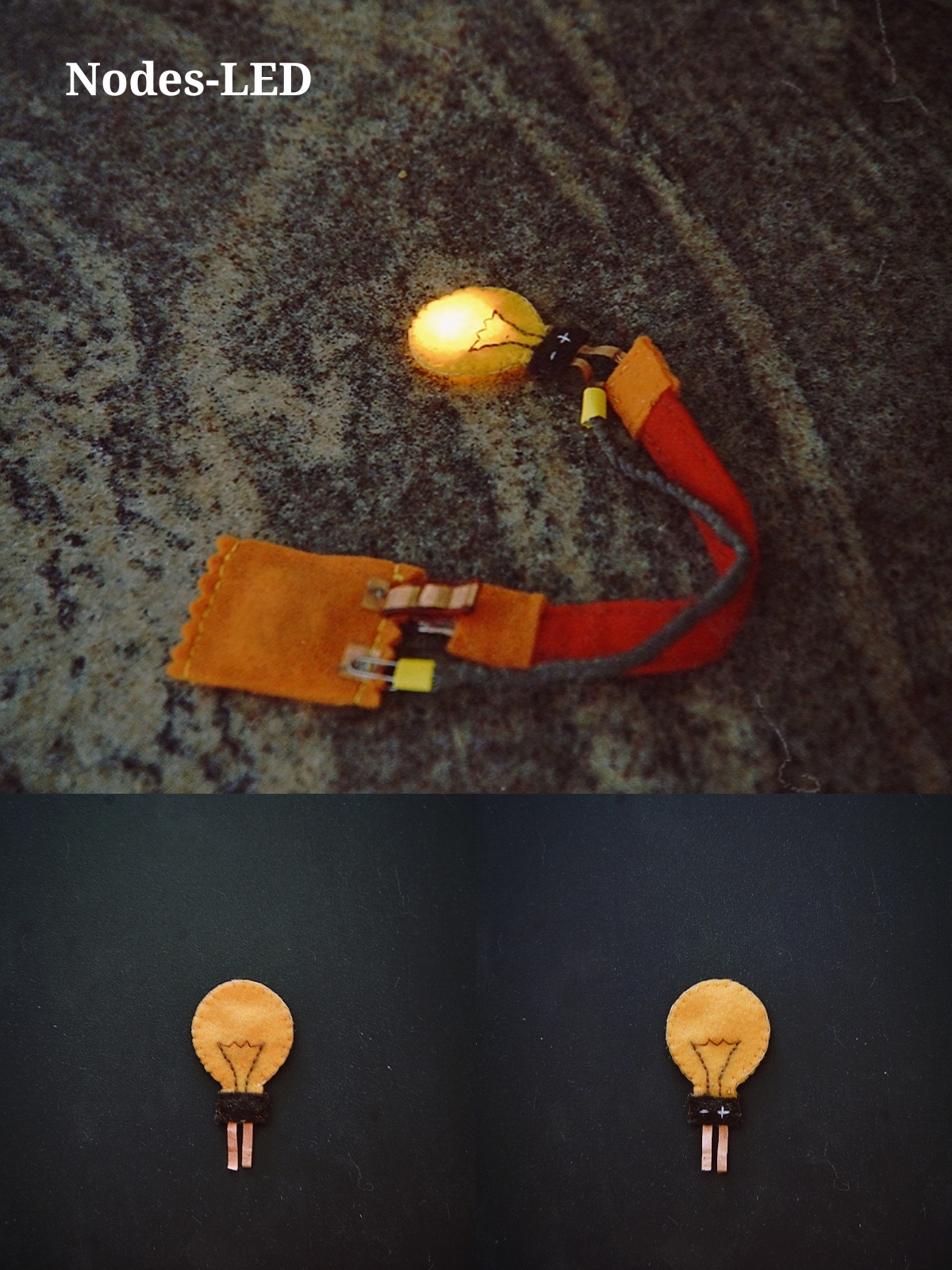 Another LED node is made by felt and conductive fabric.
Another LED node is made by felt and conductive fabric.
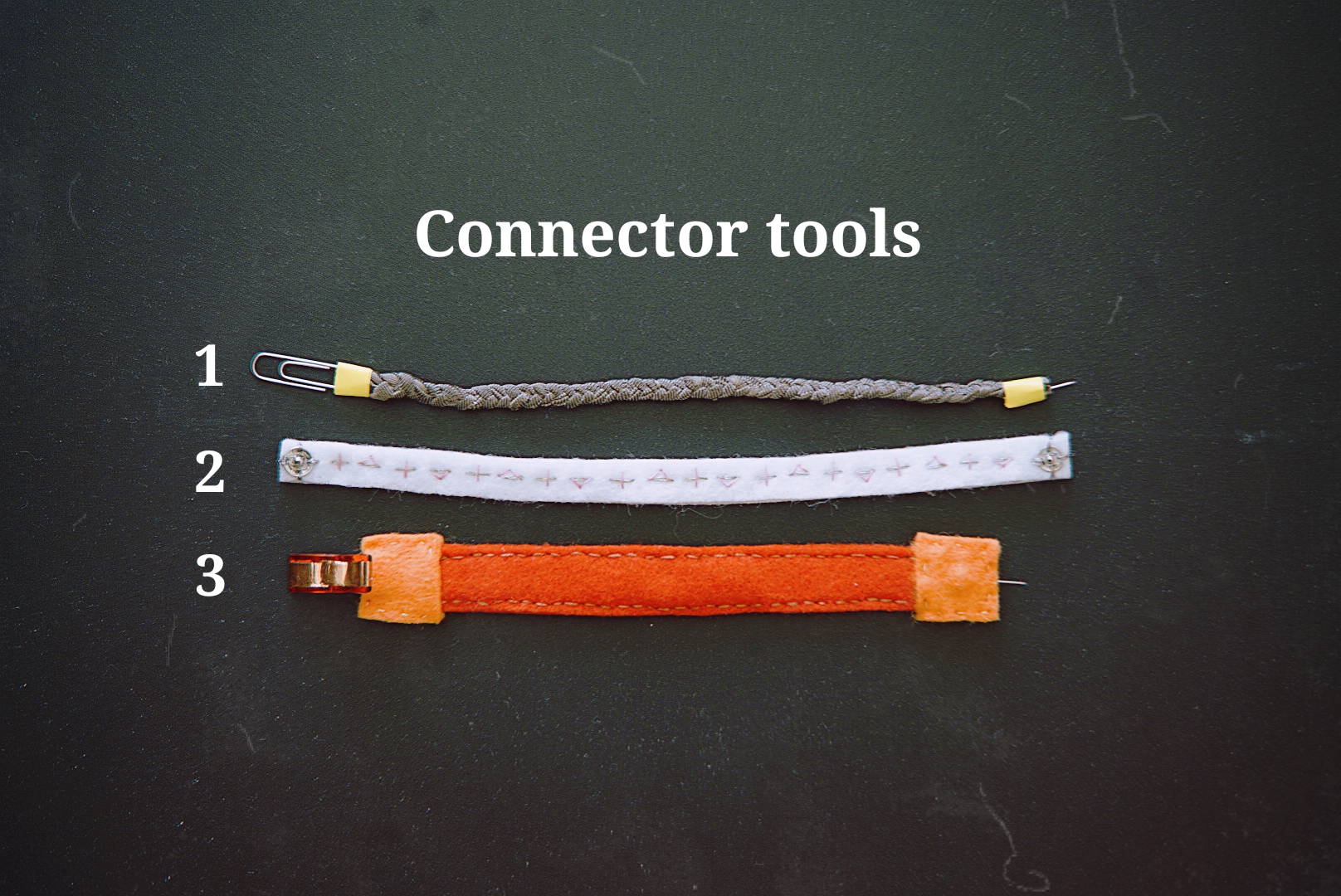 3 connector tools:
3 connector tools:
1. conductive fabric, pin, clip;
2. conductive thread, metal button, felt;
3. plastic clip, pin, felt, conductive fabric, conductive tape;
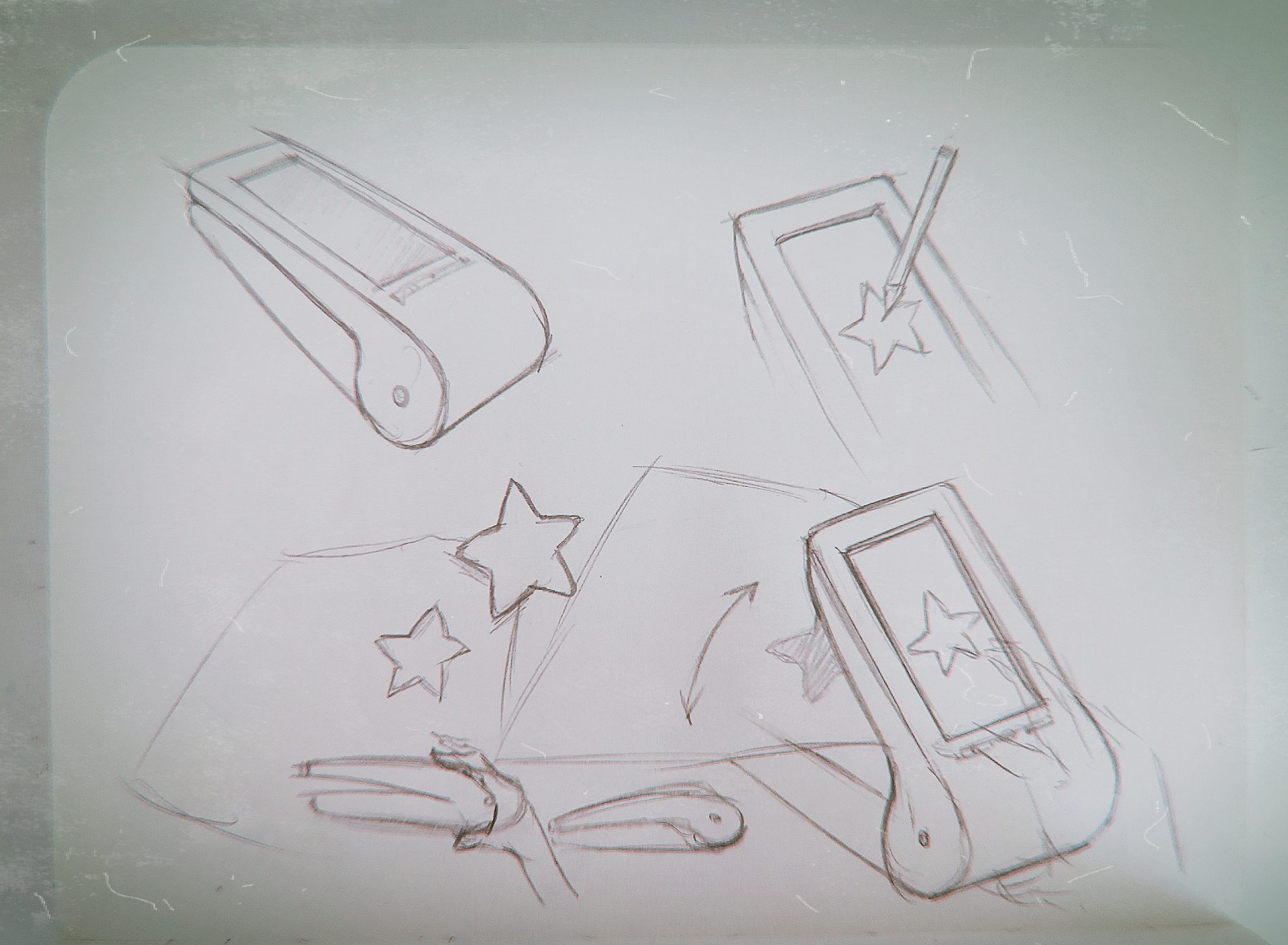 The tool I designed is for cutting patterns out of soft materials, such as paper, fabric, and foam plastic. It looks s like a stapler with a screen. Users are able to draw the pattern that they want to cut on the screen, and then put the material in the tool. Press the stapler to get the cutted pieces.
The tool I designed is for cutting patterns out of soft materials, such as paper, fabric, and foam plastic. It looks s like a stapler with a screen. Users are able to draw the pattern that they want to cut on the screen, and then put the material in the tool. Press the stapler to get the cutted pieces.
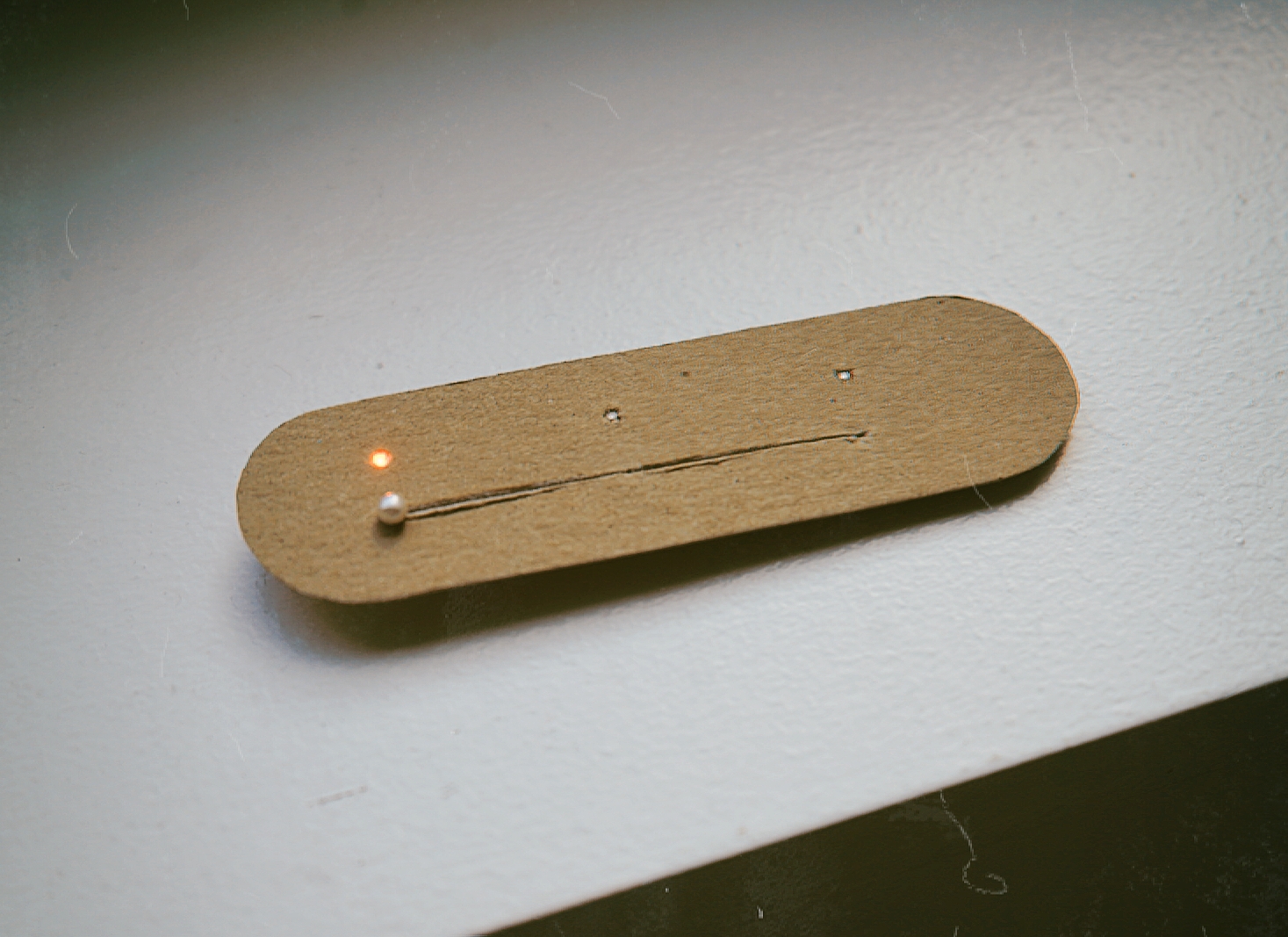
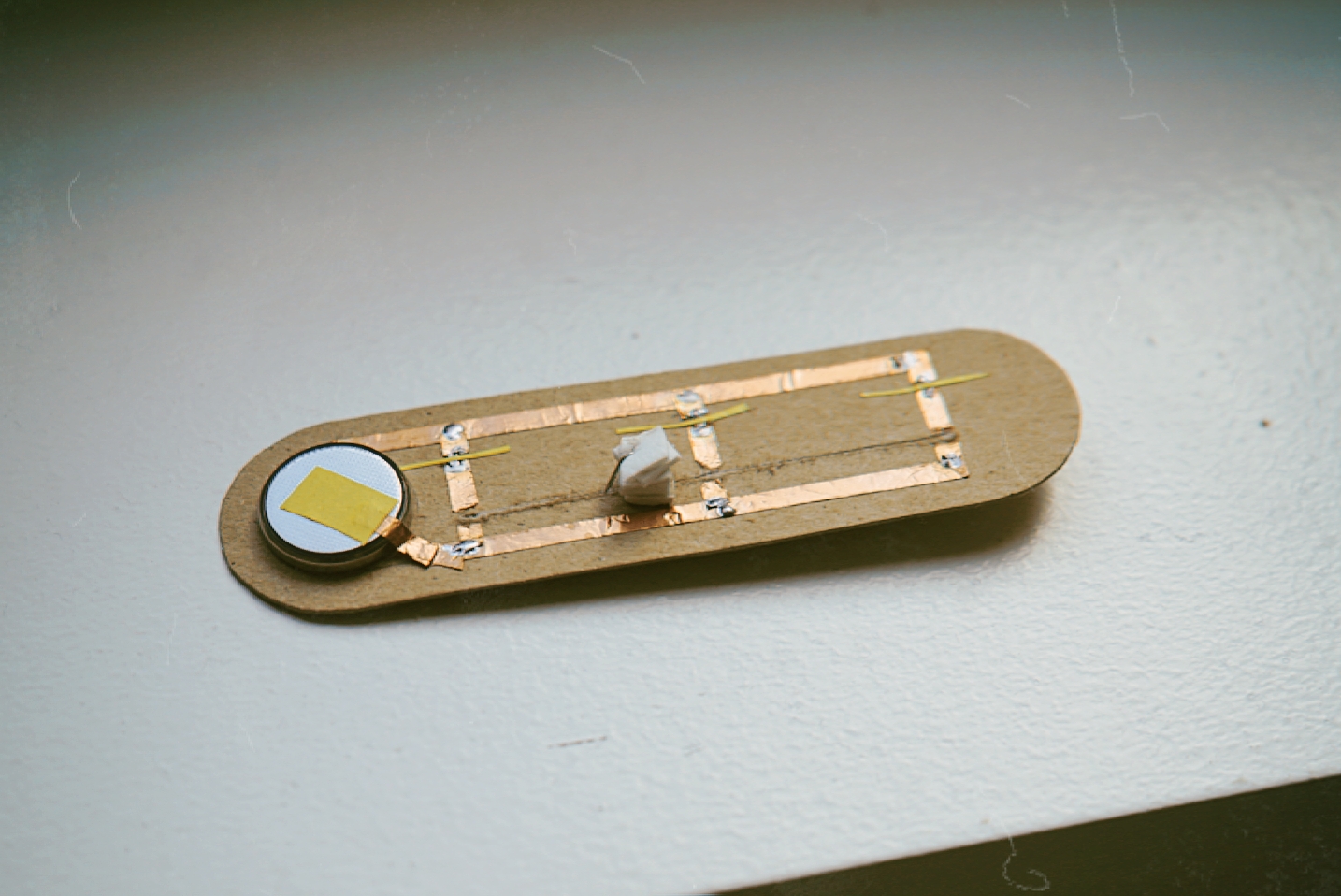
Pearl Switch
This is a switch that the users can move the bead to different positions to turn on different LEDs. I used LEDs, paperboard, conductive tapes, pins, and foamed plastic. The pin is the trigger in my swatch. And the foamed plastics are stuck together to hide the needles of pins. I soldered 3 LEDs in each swatch. I got inspiration from arcades. Some old game machines have this kind of mechanism.
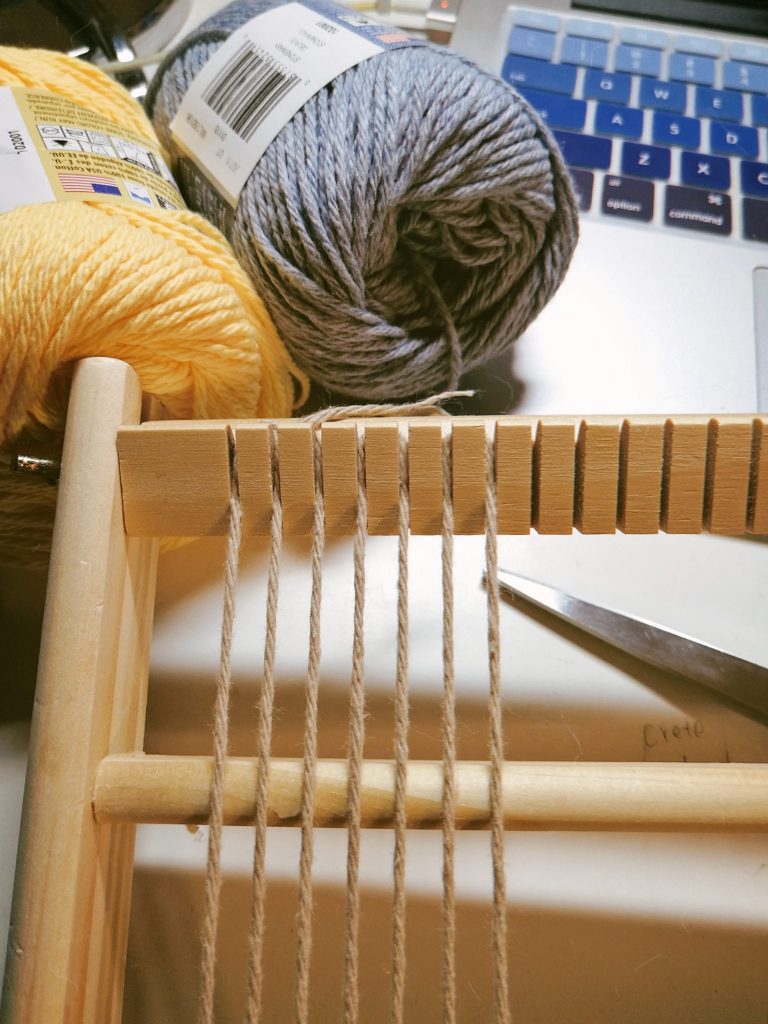
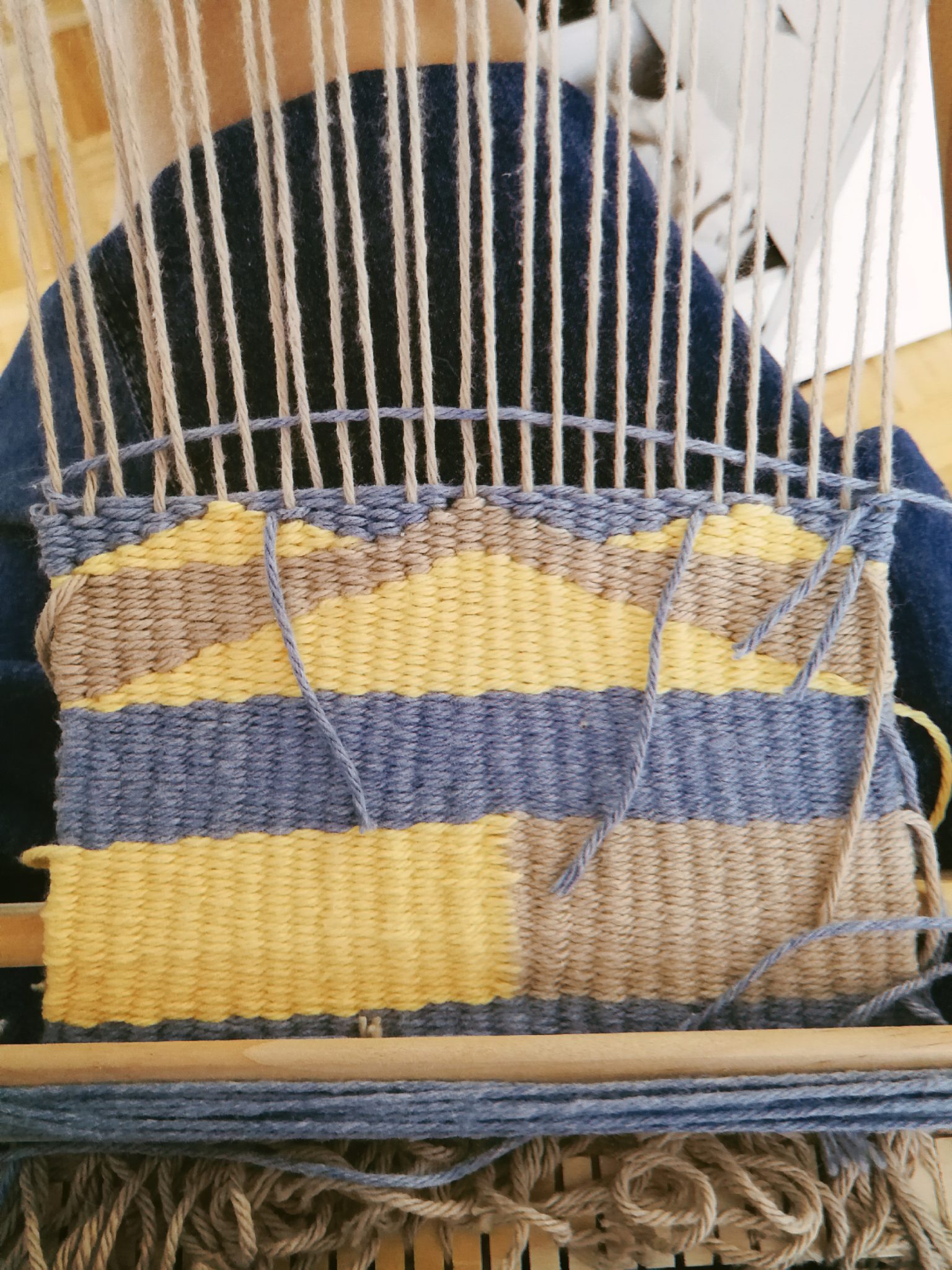
I learned how to weave by making use of a mini weaving loom. Maker, designer, artist, learner, craftsperson, and practitioner are the labels I gave myself during the process of weaving. Because the first thing I need to do is understanding the theory of weaving which is not very difficult. However, it takes time thinking about how to make different patterns instead of just rectangles. My favorite tool is my brain for now. And doing the creative jobs is the most exciting part of the making process. I realized the tricky thing about weaving is not how to make pretty patterns but how to hide all the thread residues to finish a piece.
Tips: Make sure binding of yarn and loom is tight enough or you will find all the yarns become loose in the end.